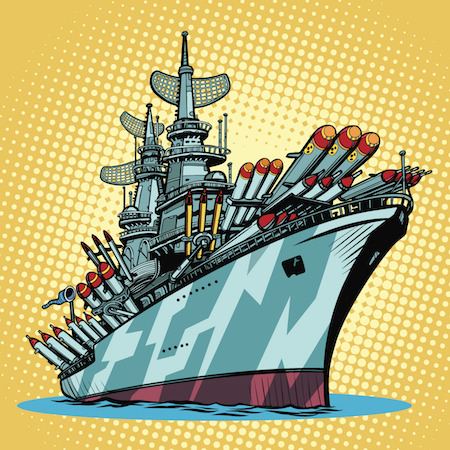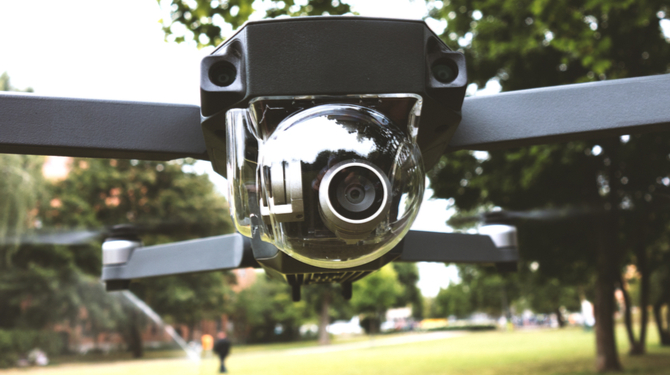By Fiona Cain, Counsel, and Matthew Turner, Associate, Haynes and Boone CDG, LLP.
Autonomous cars have already been built and are being tested and while autonomous ships are not as far advanced, the technology is rapidly developing and the first-generation autonomous vessels have been designed. Regulations dealing with safety standards for autonomous cars are being developed at a national level, with legislation currently before the UK Parliament. However, due to the global nature of shipping, the rules for autonomous ships are being developed internationally by the International Maritime Organization (IMO).
The IMO is a United Nations’ specialist agency and the global authority responsible for creating and maintaining an international regulatory framework for shipping and the marine environment. In May 2018, it agreed on a plan to review and update existing international rules to take account of autonomous ships – or, as the IMO calls them, “Maritime Autonomous Surface Ships” (MASS).
This article considers the implications of this announcement and the most likely changes to the IMO rules to allow for the widespread use of MASS.
IMO Conventions
The IMO’s regulatory framework is recorded in a series of conventions. A convention will only come into force when it is signed by a qualifying number of states and will only apply in a particular state once ratified by that state. Although conventions provide guiding principles and general rules, the national authorities of each state need to implement the conventions into local law.
The MSC’s 99th session
Last month, the IMO’s senior technical body – the Maritime Safety Committee (MSC) – held its 99th session in London and endorsed a framework for a “regulatory scoping exercise” to update IMO rules to allow for MASS operations. The scoping exercise will take place in two steps:
Step 1 – reviewing current provisions in IMO instruments and assessing whether they are applicable to MASS and/or whether they may preclude MASS operations; and
Step 2 – updating the relevant provisions to address MASS operations, taking into account the human element, technology and operational factors.
The MSC recognised that the pace of technological development may move quicker than the scoping exercise, and so invited states and international organisations to submit proposals to its 100th session (in December) for interim guidelines for MASS trials.
The definitions
For the purposes of the scoping exercise, the MSC has defined MASS as “ships which, to a varying degree, can operate independently of human interaction”. It also defined the different categories of autonomy as:
Ship with automated processes and decision support: seafarers are on board to operate and control shipboard systems and functions; some operations may be automated.
Remotely controlled ship with seafarers on board: the ship is controlled and operated from another location, but seafarers are on board.
Remotely controlled ship without seafarers on board: the ship is controlled and operated from another location; there are no seafarers on board.
Fully autonomous ship: the operating system of the ship is able to make decisions and determine actions by itself.
These categories are important because vessels with automated processes are already in operation and would appear compliant under current IMO rules. For the other categories, these comply with the existing rules to varying extents, with fully autonomous vessels unlikely to satisfy many of the existing rules.
The Correspondence Group
The MSC also established a MASS Correspondence Group to test the framework for the scoping exercise. This will be coordinated by the Finnish government – one of the countries at the forefront of these developments - and will initially assess a select number of existing rules. The purpose of this assessment is to ensure the scoping exercise will be effective when it is applied to the IMO rules more widely.
Scoping exercise: the likely changes
Although the IMO’s regulatory scoping exercise has just been announced, other organisations have already considered the conventions that will need to be updated to allow for MASS, including the AAWA, MASRWG, and INAS.
The initial conclusions of these working groups and networks are that the existing IMO rules should be updated to allow for autonomous shipping, rather than introducing a new convention.
The key IMO instruments that will need to be updated are:
- International Convention for the Safety of Life at Sea 1974 (SOLAS) – this sets out technical requirements for vessels at sea, including minimum standards for the construction, equipment and operation of ships;
- International Regulations for Preventing Collisions at Sea 1972 (COLREGs) – this sets out the “rules of the road” in shipping to avoid collisions at sea; and
- International Convention on Standards of Training Certification and Watchkeeping 1978 (STCW) – this sets out standards of training, certification and watchkeeping for seafarers to protect life and property at sea.
The UN Convention on the Law of the Sea 1982 (UNCLOS) while outside of the IMO scoping exercise, is also relevant. This treaty provides regulations dealing with territorial waters, sea-lanes, and ocean resources and a framework on the safety of ships that will also need to be considered in light of MASS.
The main issue is that all of the conventions were drafted with a human crew in mind and do not anticipate unmanned ships. The most likely changes required are considered below.
SOLAS
The main convention for maritime safety is SOLAS (first adopted in 1914 in response to the Titanic disaster). This sets out the technical requirements for vessels at sea, including in relation to construction and stability, machinery and electrical installations, fire protection, life-saving appliances, and safety of navigation.
The first obstacle in the convention is the requirement of safe manning levels. Regulation V/14(1) requires that national authorities adopt rules that all ships must be “sufficiently and efficiently manned”. The question is therefore whether – under the national laws of the flag state where a vessel is registered - it will be deemed to have safe manning levels within the meaning of SOLAS with reduced or no crew members on board.
Where a ship is remotely controlled by a qualified person from a shore-based control centre (SBCC) it may be compliant, even without crew on board. However, for a fully autonomous vessel, where there is no crew at all, Regulation V/14(1) may need to be amended.
Another issue is the duty to render assistance to persons in distress. Regulation V/33 requires “the master of a ship at sea which is in a position to be able to provide assistance, […], is bound to proceed with all speed to their assistance, if possible informing them or the search and rescue that the ship is doing so”. While a remotely controlled vessel with seafarers on board could still render physical assistance, a fully autonomous vessel would be unable to do so.
However, the duty only applies to ships at sea that are “in a position to assist”, so fully autonomous vessels may have the reduced assistance obligation of notifying search and rescue services only. Conversely, if an autonomous vessel should get into trouble at sea, there will be no duty on other vessels to render assistance, because there would be no persons in distress at sea.
SOLAS also contains many operational requirements that presume the existence of a crew including various requirements on visibility when looking out from the “navigating bridge”. The problem is that remote controlled and fully autonomous vessels do not require a navigating bridge, in the traditional sense, but will be operated or monitored from a SBCC. The regulation may need to be amended to achieve the same objective (i.e. good visibility) but in relation to the capacity and reach of cameras, radars and sensors, as controlled or monitored from an SBCC.
Vessels are also required to be equipped with life-saving appliances, such as lifeboats, but these features would be unnecessary without people on board. Regulation III/2 could provide a temporary workaround as it allows certain ships to be exempt from these requirements if they are unreasonable or unnecessary and providing the vessel is operating within 20 miles of land. With the first generation of fully autonomous vessels likely to be used for short journeys and close to land, such as the Yara Birkeland, a MASS container ship which is due to operate autonomously from 2020, will be a temporary solution.
COLREGs
COLREGs sets out “the rules of the road” in shipping. It covers steering and sailing, lights and shapes, sound and light signals etc., and regulates the two main navigational tasks of crew on board ships: situational awareness and operational decision-making. There is no question of COLREGs applying to autonomous ships – as they fall within the definition of vessels “that are used or capable of being used as a means of transportation on water”. However, COLREGs (like the other conventions) assumes that ships are controlled by humans and navigational decisions are based on a human assessment of changing circumstances at sea.
Rule 5 requires that “every vessel shall at all times maintain a proper look-out by sight as well as by all available means appropriate in the prevailing circumstances and conditions so as to make a full appraisal of the situation and of the risk of collision”. The term “look-out” refers to how the ship collects and organises information about its surroundings. The key question is whether the terms “proper” and “appropriate” provide sufficient flexibility to allow for cameras, sensors, and radars to perform this task. It has been suggested that an electronic lookout would be compliant with Rule 5, as long its ability is at least comparable to that of a human. This ought to be the case because autonomous ships should record and process their surroundings faster and more accurately than humans, and provide warnings to those monitoring a vessel where there is, for example, a risk of collision.
Rule 2 requires “any vessel, or the owner, master or crew thereof” to comply with COLREGSs and to take “precautions which may be required by the ordinary practice of seamen, or by the special circumstances of the case” i.e. imposing a general requirement of good seamanship. The use of the disjunctive “or” might allow the responsibility to be placed on the vessel itself (thereby covering all MASS) but it is not yet clear how a general requirement of good seamanship could be applied to MASS by reference to “the ordinary practice of seamen”.
There is also a question of whether COLREGs requires the person in charge of the operational decisions to be on board. There is no obvious obstacle in the wording; all of the steering and sailing rules refer to ‘vessels’ without any further requirements as to where the person making the decisions is located. Compliance will therefore depend on the level of autonomy.
A remotely controlled ship (whether or not with seafarers on board) could meet the COLREGs requirements if a human is taking operational and navigational decisions in real time and acting as a seaman. However, this may not be the case with a fully autonomous ship where these processes are automated. Technically speaking, a ship’s algorithms can be designed so that all its actions are COLREGs compliant, but the text will nevertheless need to be updated to take account of this. Such changes could be drawn up as a simple annex that applies to fully autonomous ships identifying the permitted automated processes (rather than trying to amend the existing rules).
STCW
Strictly speaking, STCW only applies to “seafarers serving on board seagoing ships” and would not cover SBCC operators. As a result, STCW will need to be amended to cover shore-based personnel but, in the meantime, it should be applied by analogy.
STCW allows states to adopt different educational or training requirements adapted to technical developments and special types of ships. Careful consideration will need to be given to the qualifications and abilities of personnel who operate and monitor ships remotely, as they will need a combination of seafaring and technological skills and ongoing training and certification to keep up to date.
The main issue under STCW is the watchkeeping requirement. Regulation VIII/2(1) requires that “companies, masters, chief engineer officers and all watchkeeping personnel […] ensure that a safe continuous watch or watches appropriate to the prevailing circumstances and conditions are maintained in all seagoing ships at all times” and, Regulation VIII/2(2) says that “officers in charge of the navigational watch are responsible for navigating the ship safely during their periods of duty, when they shall be physically present on the navigating bridge…”. There are also requirements on lookout, bridge, engine room and radio watches, and (like SOLAS) the term ‘navigating bridge’ is used throughout the convention.
As fully autonomous ships (and many remotely controlled vessels) will have no crew physically on board, these will not comply with the STCW watchkeeping rules. Amendments to the convention will most likely transfer the obligations from officers on board the ship to officers in the SBCC and, in the case of fully autonomous vessels, ensure that the ship’s ability to observe its surroundings is at least as good as if it was manned and has the ability to alert those monitoring it.
UNCLOS
UNCLOS is not technically an IMO instrument and falls outside the IMO’s scoping exercise. However it is an important maritime convention which, like SOLAS, requires flag states to ensure that ships have appropriate manning levels and are under a duty to render assistance to vessels in distress. It may therefore be the case that the changes identified for SOLAS will be addressed in UNCLOS in due course.
MASS changes
The current IMO rules do not take account of all types of MASS and will need to be amended to cover them if these vessels are to take to the seas. The benefit of the IMO making these changes is that they will be far reaching because the conventions above cover 99 percent of shipping tonnage worldwide. The problem is that changing rules at an international level could take years and the scoping exercise is just the start – the conventions are signed by over 160 countries, many of which are not currently investing in MASS. However, amending them may not be as difficult as first appears because the IMO has pioneered a “tacit acceptance” procedure for amendments, whereby agreed amendments will come into force after a certain period for all parties other than those that have specifically objected.
Nevertheless, the IMO may need to produce non-binding interim guidelines, to keep pace with technological development – or at least to address specific categories of autonomous ships – in order to ensure the continued safety of our seas. Otherwise, the development of autonomous ships may be hampered by inconsistent rules being introduced, resulting in vessels not being compliant with the amended conventions and unsuitable for international use.




.jpg)
.jpg)
.jpg)

.jpg)



.jpg)
